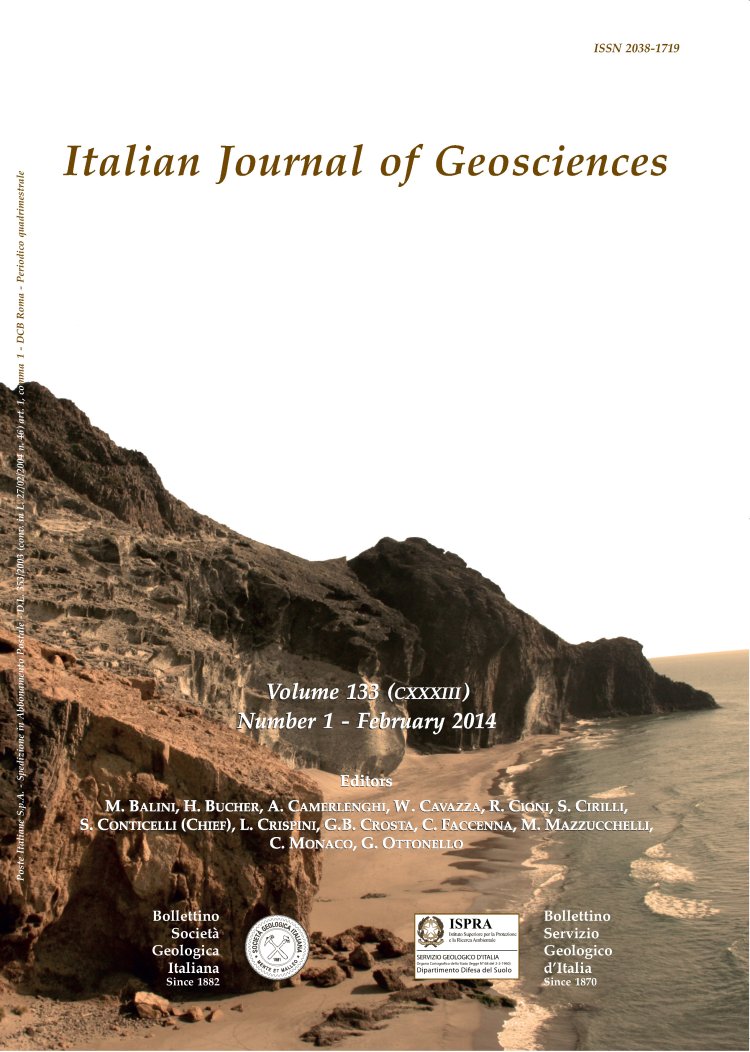
Facies analysis and depositional architecture of shelf-type deltas in the Crati Basin (Calabrian Arc, south Italy)
Davide Fabbricatore(*), Gaetano Robustelli(**) & Francesco Muto(**)
(*) DiBEST, University of Calabria, Via P. Bucci - 87036 Arcavacata di Rende (CS), Italy.
(**) DIATIC, University of Calabria, Via P. Bucci - 87036 Arcavacata di Rende (CS), Italy. Corresponding author: Tel: +39(0)984493544;
fax: 39(0)984496655; e-mail: address: francesco.muto@unical.it
Volume: 133 (2014) f.1
Pages: 131-148
Abstract
This study focuses on facies analysis and depositional architecture of the Arente shelf-type delta, located at the southernmost margin of the Pleistocene Crati Basin (northern Calabria, southern Italy). Tectonically-controlled Gilbert deltas are extensively discussed in the literature, whereas few works document shelf-type deltas and factors controlling sedimentation. This paper contributes to these issues, with a special focus on evaluating eustatic and tectonic control on depositional architecture also by considering the occurrence of coeval Gilbert-delta systems.
The Arente delta complex represents part of the coarse-grained sediments presently exposed along the eastern margin of the Crati Basin. It was sourced from the rising Sila Massif to the E and shows an overall westerly progradation.
Conventional sedimentological analysis allowed to distinguish seven different facies associations. Well-exposed sections, at the basin margin, generally show an overall upward transition, locally basinward, from mouth-bar conglomerates and sandstones, to deltafront sandstone, to offshore mudstones. Facies distribution and arrangement are interpreted as the record of a shoal-water fan delta.
Depositional processes were clearly influenced by the high sediment input, with a dominance of hyperpycnal deposits.
Based on the occurrence of a series of bounding surfaces indicating abrupt drowning stages, the Arente deltaic succession can be divided into 5 distinct transgressive-regressive sequences.
The fining and the thinning upward trend of the whole succession and the stacked landward-stepping architecture of the transgressiveregressive sequences, i.e. the E-directed retrogradational behavior of the Arente delta complex indicate that.
Tectonic subsidence provided the accommodation space for the deposition of the delta complex, for the marked local backstepping of the system, and for the progressive drowning of bedrock. Highfrequency sea level fluctuations led to the repeated arrangement of the facies associations; in particular, the stacking of the individual deltaic sequences separated by transgressive surfaces suggests amplitudes of eustatic sea-level changes of a few tens of metres, thus representative of a higher-order cyclicity. The differing internal architecture, if compared to the steeply-dipping foreset beds of the Gilbert-type delta cropping out to the N of the study area, is interpreted as due to a decrease in displacement toward the southern tip of the Crati system fault.
Keywords
Get Full Text